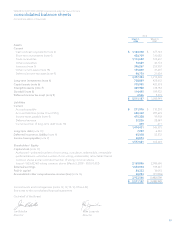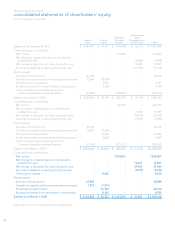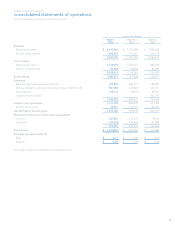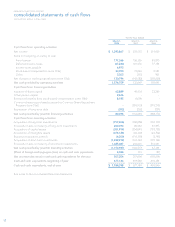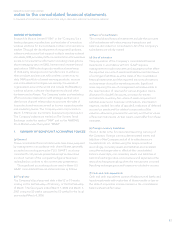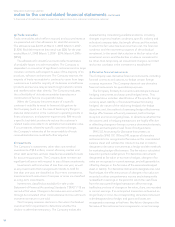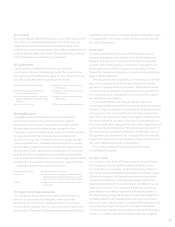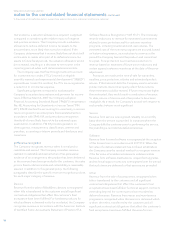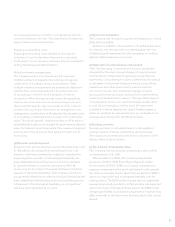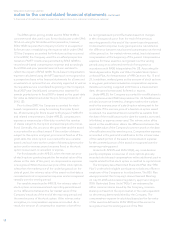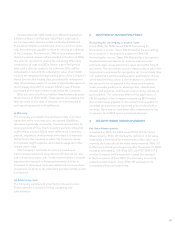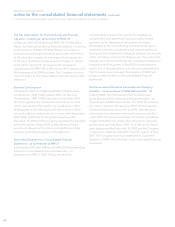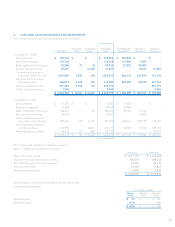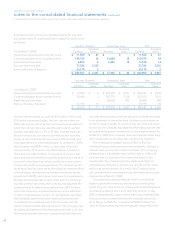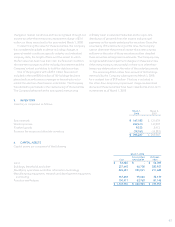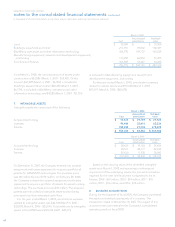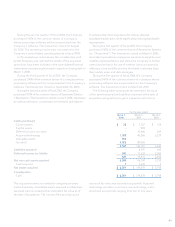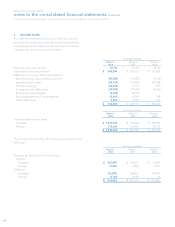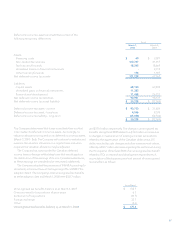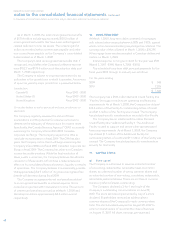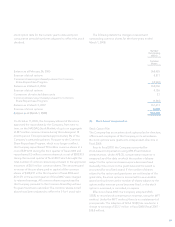Blackberry 2008 Annual Report Download - page 61
Download and view the complete annual report
Please find page 61 of the 2008 Blackberry annual report below. You can navigate through the pages in the report by either clicking on the pages listed below, or by using the keyword search tool below to find specific information within the annual report.59
2. ADOPTION OF ACCOUNTING POLICY
Accounting for Uncertainty in Income Taxes
In July 2006, the FASB issued FIN 48 Accounting for
Uncertainty in Income Taxes. FIN 48 clarifies the accounting
for uncertainty in tax positions subject to SFAS 109
Accounting for Income Taxes. FIN 48 provides a recognition
threshold and a mechanism to measure and record tax
positions taken, or expected to be taken during the filing of
tax returns. The mechanism is a two-step process in which the
tax position is evaluated for recognition on “a more likely than
not” basis that it will be sustained upon examination. If step
one is satisfied the position is then evaluated to determine
the amount to be recognized in the financial statements.
It also provides guidance on derecognition, classification,
interest and penalties, interim period accounting, disclosure
and transition. The cumulative effect of the application of
FIN 48 resulted in the Company reclassifying $25.9 million
from current taxes payable to non-current taxes payable for
uncertain tax positions not expected to be resolved within
one year. There was no cumulative effect adjustment to the
Company’s fiscal 2008 opening retained earnings.
3. RECENTLY ISSUED PRONOUNCEMENTS
Fair Value Measurements
In September 2006, the FASB issued SFAS 157 Fair Value
Measurements. SFAS 157 clarifies the definition of fair value,
establishes a framework for measurement of fair value, and
expands disclosure about fair value measurements. SFAS 157
is effective for fiscal years beginning after November 15, 2008
except as amended by FSP SFAS 157-1 and FSP SFAS 157-2
and the Company will be required to adopt the standard
in the first quarter of fiscal 2010. The Company is currently
evaluating what impact, if any, SFAS 157 will have on its
consolidated financial statements.
On December 20, 2007, the Board of Directors adopted
a Deferred Share Unit Plan (the “DSU Plan”) under which
each independent director will be credited with Deferred
Share Units (“DSUs”) in satisfaction of all or a portion of the
cash fees otherwise payable to them for serving as a director
of the Company. At a minimum, 50% of each independent
director’s annual retainer will be satisfied in the form of DSUs.
The director can elect to receive the remaining 50% in any
combination of cash and DSUs. Within a specified period
after such a director ceases to be a director, DSUs will be
redeemed for cash with the redemption value of each DSU
equal to the weighted average trading price of the Company’s
shares over the five trading days preceding the redemption
date. Alternatively, subject to receipt of shareholder approval,
the Company may elect to redeem DSUs by way of shares
purchased on the open market or issued by the Company.
DSUs are accounted for as liability-classified awards under
the provisions of SFAS 123(R). These awards are measured at
their fair value on the date of issuance, and remeasured at
each reporting period, until settlement.
(v) Warranty
The Company provides for the estimated costs of product
warranties at the time revenue is recognized. BlackBerry
devices are generally covered by a time-limited warranty for
varying periods of time. The Company’s warranty obligation
is affected by product failure rates, differences in warranty
periods, regulatory developments with respect to warranty
obligations in the countries in which the Company carries
on business, freight expense, and material usage and other
related repair costs.
The Company’s estimates of costs are based upon
historical experience and expectations of future return rates
and unit warranty repair cost. To the extent that the Company
experiences increased or decreased warranty activity, or
increased or decreased costs associated with servicing those
obligations, revisions to the estimated warranty liability would
be required.
(w) Advertising costs
The Company expenses all advertising costs as incurred.
These costs are included in Selling, marketing and
administration.


